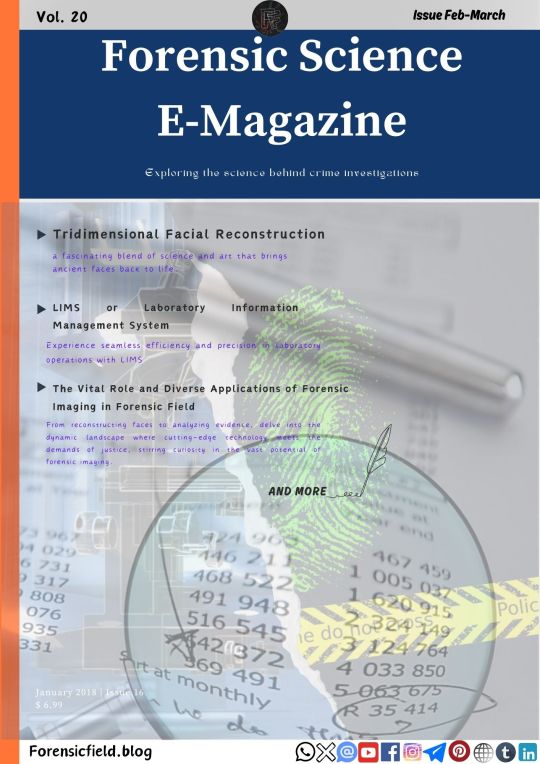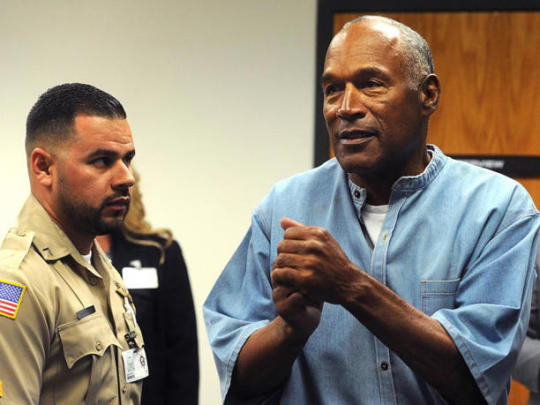#forensic identification
Explore tagged Tumblr posts
Text
Unraveling the World of Poroscopy in Forensic Science
The Paramount Significance of Personal Identification Dive into the intricate world of poroscopy in forensic science. Discover how the study of sweat pores enhances fingerprint identification, aiding in personal identification, gender determination, and crime scene investigation. In criminal investigations, personal identification serves as a critical tool in bringing clarity to cases. Whether…
0 notes
Text
bones in need of identification?
no guarantees but im Katherine and im a very bored consulting certified forensic anthropologist & osteoarcheologist!
i can tell you pathologies, trauma, and sometimes age and sex depending on species :)
submit an ask, tag me, or shoot me a message and i'll be happy to try and identify!
#vulture culture#bone collecting#bones#bone identification#bone hunting#forensic anthropology#osteology#animal bones
17 notes
·
View notes
Text
Nutrient Foramen of Femur
Found around the midshaft level
On posterior level
Next to or on the linea aspera
Exits bone distally

Patreon
#studyblr#notes#my notes#anthropology#biological anthropology#bioanthropology#bioanthro#bioanth#bio-anthropology#human biology#human osteology#biology#bio#osteology#osteological analysis#skeletal system#forensics#forensic anthropology#human bones#bones#forensic science#science#bone analysis#human identification#bioarchaeology#bioarcheology#archaeology#archeology#biological science#life science
4 notes
·
View notes
Text
Egyptian Pharaoh Ramesses II was issued a passport 3,000 years after his death in order for his mummy to fly to Paris.

Ramesses II (c. 1303 BC – 1213 BC), commonly known as Ramesses the Great, is often regarded as the greatest, most celebrated, and most powerful pharaoh of the New Kingdom.
His successors and later Egyptians called him the “Great Ancestor.”
Ramesses II was originally buried in a grand tomb in the Valley of the Kings.
He was subsequently moved many times by priests who feared looters. He spent as little as three days in some places, and the priests recorded their actions on wrappings on his body.
Despite his resplendent wealth and power in life, his body was later moved to a royal cache.
With the passage of time, his sarcophagus was lost to history.
It was re-discovered in a deteriorating condition in 1881. It is now on display in the Museum of Egyptian Antiquities.
It was his poor condition that prompted Egyptian authorities to seek help preserving him in the mid-1970s.
They found their experts in France and reluctantly decided to transport the 3,000 year-old mummy to Paris.
In 1975, Maurice Bucaille, a French doctor studying his remains, said that the mummy was threatened by fungus and needed urgent treatment to prevent total decay.
French laws dictated that entry and transportation through the country required a valid passport.
To comply with local laws, the Egyptian government issued a passport to the Pharaoh.
Seemingly, he was the first mummy to receive one. His occupation was listed as "King (deceased)."
The government didn’t want him to get a passport for publicity but believed it would afford them legal protections to ensure his safe return.
As countless artifacts and mummies have been plundered and stolen from Egypt, museums in Europe didn’t always respect Egyptian claims.
In 1976, his remains were issued an Egyptian passport so that he could be transported to Paris for an irradiated treatment to prevent a fungoid growth.
The New York Times reported on 27 September 1976 that the French military aircraft that brought Ramesses' remains from the Cairo Museum was greeted by the Garde Republicaine, France's equivalent of a U.S. Marine honor guard.
“The mummy was greeted by the Secretary of State for Universities, Alice Saunter‐Seite, and an army detachment.
Ramses II, who ruled Egypt for 67 years, received special treatment at Le Bourget Airport.”
It was then taken to the Paris Ethnological Museum for inspection by Professor Pierre-Fernand Ceccaldi, the chief forensic scientist at the Criminal Identification Laboratory of Paris.
During the examination, Cecaldi noted:
“Hair, astonishingly preserved, showed some complementary data, especially about pigmentation.
Ramses II was a ginger-haired ‘cymnotriche leucoderma'” (meaning he was a fair-skinned person with wavy ginger hair).
He is 5 ft '7 inches tall. They found battle wounds, arthritis and tooth abscess.
In ancient Egypt, people with red hair were associated with deity Set, the slayer of Osiris. The name of Ramesses II’s father, Seti I, means “follower of Seth.”
The examination also revealed evidence of previous wounds, fractures and arthritis, which would have left Ramesses with a hunched back in the later years of his life.
In 2007, it was discovered that small tufts of the Pharaoh’s hair were stolen during the 1976 preservation work (published by the BBC).
A Frenchman named Jean-Michel Diebolt said he had inherited the hair from his late father, a researcher from the team who analysed the mummy.
Deibolt had tried to sell the hair through an online auction for 2000 euros (£1360) but was quickly apprehended by French authorities.
📷 : An artist’s creation of the passport. Image is for representative purposes only. The actual passport is not publicly available.
#Ramesses II#egyptian pharaoh#Ancient Egypt#ancient civilizations#mummy#passport#Valley of the Kings#sarcophagus#Maurice Bucaille#fungus#Paris Ethnological Museum#Pierre-Fernand Ceccaldi#Criminal Identification Laboratory of Paris#Jean-Michel Diebolt#forensics#Museum of Egyptian Antiquities#Ramesses the Great#Cairo Museum#Garde Republicaine
7 notes
·
View notes
Text
Maybe I'm just arrogant but I feel like identifying a body is not even difficult. Like their faced is mushed in or whatever but I could for sure tell.
2 notes
·
View notes
Text
Forensic Science E-Magazine (Feb-March 2024)
We proudly present the January issue (Vol 20) of your favourite magazine, Forensic Science E-Magazine. As usual, the current issue has helpful content related to forensic science. #forensicscienceemagazine #forensicscience #forensicfield #crimescene
Continue reading Forensic Science E-Magazine (Feb-March 2024)

View On WordPress
#Artificial Intelligence Technology and Forensic Science#blood identification tests and examination#document examination instrument#fingerprint detection tests and examination#forensic science and ai#forensic science e magazine#Forensic science Magazine 2024 jan#LIMS#mcq on questioned document#tridimensional facial reconstruction#vital role and diverse application of forensic imaging in forensic field
4 notes
·
View notes
Text
*supersonic shrieking*
#forensic anthropology#osteology#skeletons#human remains#animal remains#human identification#animal identification#forensic archaeology#crime scene#investigations#bones
3 notes
·
View notes
Text
babygirl i can get emotional about dead people i don’t have even a fifth degree connection to
#this post is about specifically my special interest in forensic identification#but also if you have an interest niche enough to misconstrue this as you then im mentally high fiving you#except for hamilton fans. go read a book#go read something by bell hooks or toni morrison#idk I’m real overtired with this animation project and this existential depression#there are people who are smarter and less sleep deprived than me who can give you some pointers#elisha dot thought#does and disappearances
9 notes
·
View notes
Text
#Lévi-Strauss look at the Tsimshian#anthropology 2024 question paper#Anthropology optional subject question paper 2024#Anthropology optionals 2024 question paper#Anthropology Optional Coaching UPSC#Vijetha IAS Academy Anthropology#Anthropology crash course UPSC#Anthropology daily answer writing UPSC#Kishore sir Anthropology#forensic anthropology applications#crime scene investigation#disaster victim identification#historical cases in forensic anthropology
0 notes
Text
Forensic DNA testing is a game-changer in identifying unknown individuals, offering a level of accuracy that other methods simply cannot match. Whether it’s for criminal investigations, disaster victim identification, or even resolving personal matters, forensic DNA testing in Houston, Texas, plays a crucial role.
0 notes
Text
Y'know, this is both silly and rightfully world-weary, but there's a grain of truth to it. Good confrontation is a learned skill.
Taking my first posters to academic conferences was nerve-wracking enough (hello, very pro-trans, gender-binary-challenging, ship-rocking research into how Forensic Anth is ignoring and failing a whole group at higher risk of needing identification...) but being able to practice responding to critiques, questions and outright attacks made it so much better. My Crim Grad cohort took turns doing Speed Debating, essentially, trying to take potshots at each other. Practicing how to respond on our feet and breathe through it. Slow down the pace.
And yeah, knowing exactly who you're up against is good. I didn't think I was going to have to get knee deep in terfy and/or second-wave feminist politics just to talk about bones, surgery and hormonal changes, but you never know who's going to try to hijack your presentation with an outburst.

532 notes
·
View notes
Text
Unlocking the Forensic Potential: Tongue Prints as a Revolutionary Biometric
The Uniqueness of the Tongue: An Underrated Identifier In forensic science, the pursuit of reliable biometric identification has expanded to include the study of tongue prints. Like fingerprints, the human tongue harbors unique characteristics—shape, color, and texture—that distinguish individuals, even among identical twins. This distinctiveness makes the tongue a promising tool for…
0 notes
Text
O.J. Simpson’s Twists of Fate: From Cancer Battles to Infamous Trials
In May 2023, O.J. Simpson shared a video on X (formerly known as Twitter), revealing that he had recently “caught cancer” and undergone chemotherapy. Although he didn’t specify the type of cancer, he expressed optimism about beating it. Fast forward to February 2024, when a Las Vegas television station reported that Simpson was once again receiving treatment for an unspecified cancer. In a…

View On WordPress
#AI News#biometric identification#case prediction#crime prevention#document analysis#ethical AI#facial recognition#forensic analysis#kaelin#kato#legal research#machine learning#News#nicole simpson#O.J. Simpson#predictive policing#ron goldman#sentiment analysis
0 notes
Text
Zones of Pulp Development


Patreon
#studyblr#notes#my notes#anthropology#biological anthropology#bioanthropology#bioanthro#bioanth#bio-anthropology#human biology#human osteology#biology#bio#osteology#osteological analysis#skeletal system#forensics#forensic anthropology#human bones#bones#forensic science#science#bone analysis#human identification#bioarchaeology#bioarcheology#archaeology#archeology#biological science#life science
4 notes
·
View notes
Text
... these were drowned bodies. They were likely to be damaged, either by aquatic predators or by contact with rocks, bridges, boats or other underwater obstructions. Drowned bodies show all the discolouration and bloating of normal decomposition plus some much earlier skin changes. Even if retrieved from the water within a few hours, those inevitable ‘washerwoman hands’ can make fingerprinting difficult, and when there is a complete loss of the skin from the hands – elegantly called ‘degloving’ – well, then it can be extremely difficult or almost impossible to take fingerprints from the deeper layers of skin, the dermis.
Unnatural Causes: The Life and Many Deaths of Britain’s Top Forensic Pathologist Unnatural Causes (Dr. Richard Shepherd)
#Unnatural Causes: The Life and Many Deaths of Britain's Top Forensic Pathologist#Unnatural Causes#UC Chapter 22#Dr. Richard Shepherd#forensics#pathology#fingerprints#identification#drowning#writing reference#V#books#quotes
1 note
·
View note
Text
You know how transphobes often say things like “When they dig up your bones in the future, they’re gonna see your sex, not your gender”?
That’s actually not quite accurate. The most common bone used to identify sex is the pelvis, which is in fact quite static and remains relatively unchanged after puberty. However, the chest is quite flexible, and changes often throughout a person’s life due to several activities. And the chest is also used for sex identification of human remains.
Many lifestyle changes affect the structure of your chest, such as weightlifting, javelin throwing, and… hormone replacement therapy! Estrogen and testosterone supplements change the chest in ways that are closer to a person of your gender identity, to the extent that a forensic scientist could potentially identify you as transgender simply looking at your bones.
Trans people have trans skeletons!
6K notes
·
View notes